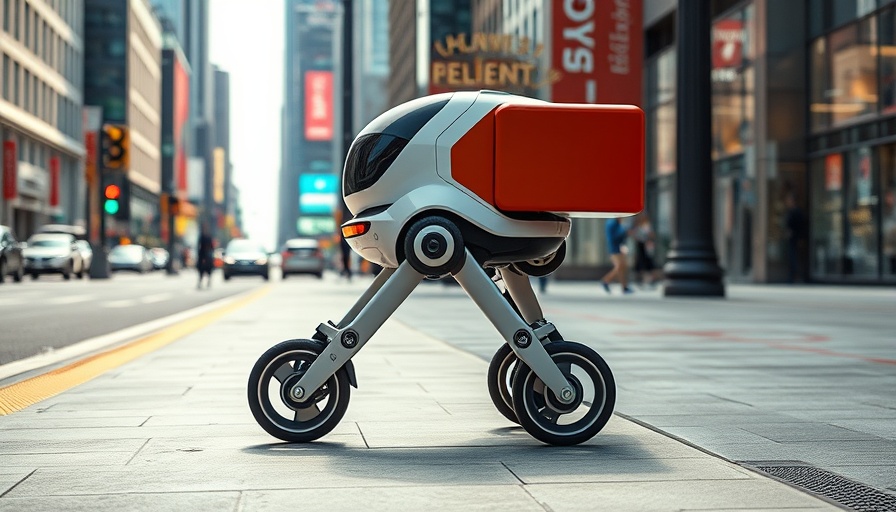
Affordable Mobility: Infinite Machine's New Olto Scooter
In a showcase that may shift the landscape of micromobility solutions, New York-based startup Infinite Machine unveiled its latest offering—the Olto. Priced at $3,495, this seated electric scooter enters a competitive market with the promise of affordability combined with functional versatility. As cities around the world seek sustainable transport options, products like the Olto could redefine how urban dwellers navigate their environments.
Modular Design for Diverse Needs
The Olto stands out for its modular design, allowing users to tailor it to their needs. Features like attachable child carriers and baskets echo the versatility found in larger cargo bikes. Importantly, the scooter provides pedal-assist capability, effectively expanding its function as a bicycle for riders who prefer an extra push. Such adaptability not only enhances user experience but could make the Olto attractive to families or gig economy workers in need of adaptable transport.
The Competitive Landscape of Electric Scooters
While Infinite Machine aims to penetrate the American market, the terrain appears rocky. Many established brands, such as Rad Power Bikes, have faced challenges, including layoffs and market exits. Consumer demand for personal electric transport has fluctuated, driven by economic trends and the production capacities of competitors like VanMoof and Cake. With Infinite Machine claiming to offer a unique sensibility in product design, it will be interesting to see how the Olto competes amidst such adversity.
A Focused Vision Towards Urban Transport
CEO Joseph Cohen articulates an ambitious vision for Infinite Machine, aiming to have its vehicles in every major city worldwide. The current focus, however, remains squarely on the U.S. introducing the Olto amidst the market's tumultuous climate. Its affordability could serve as a compelling selling point, making it accessible to a broader demographic. Whether this new scooter can break through the noise will depend largely on marketing and consumer acceptance.
Conclusion: A Move Towards Sustainable Solutions
With the launch of the Olto, Infinite Machine is positioning itself as a frontrunner in the quest for innovative micromobility solutions. As we progress into a future where sustainable urban transport is paramount, the potential for electric scooters to play an essential role in daily commuting becomes increasingly apparent. The Olto represents not just a product, but a shift towards more sustainable and adaptable transport options, highlighting an avenue for investment and interest.
 Add Row
Add Row  Add
Add 




Write A Comment